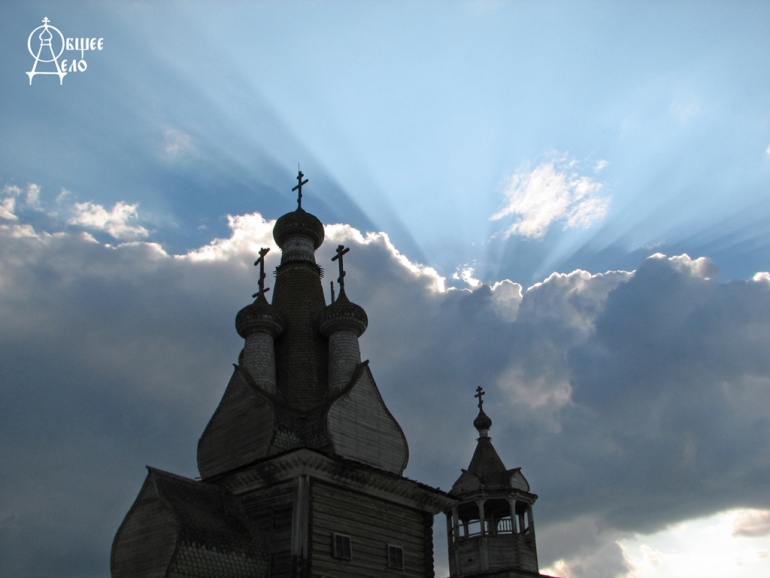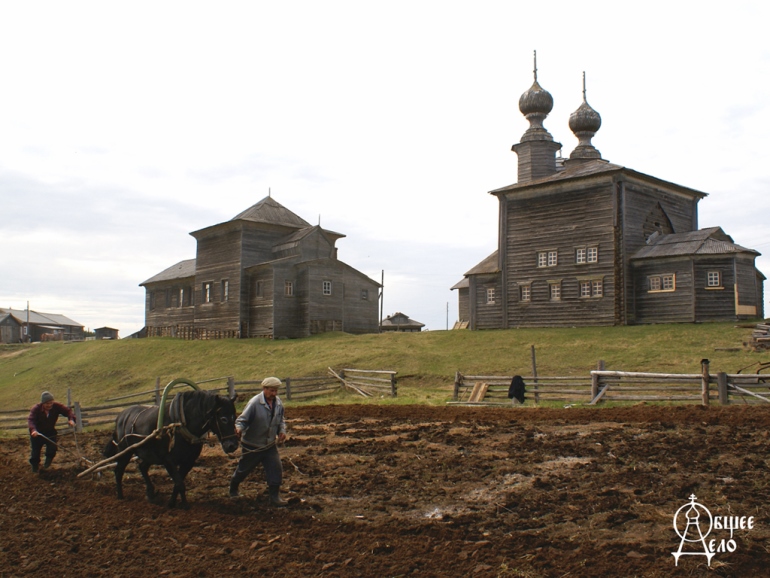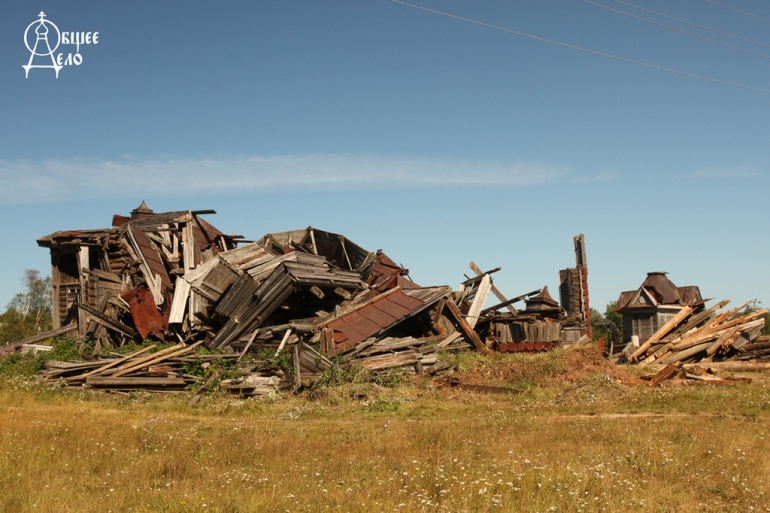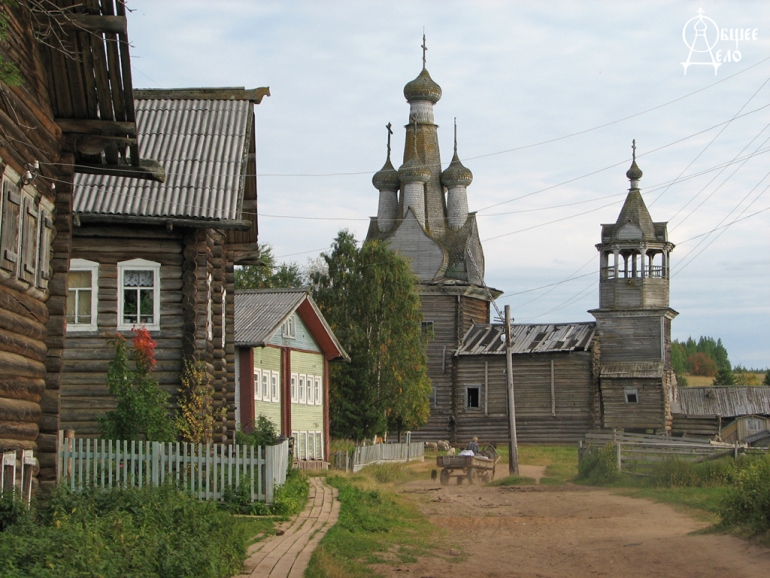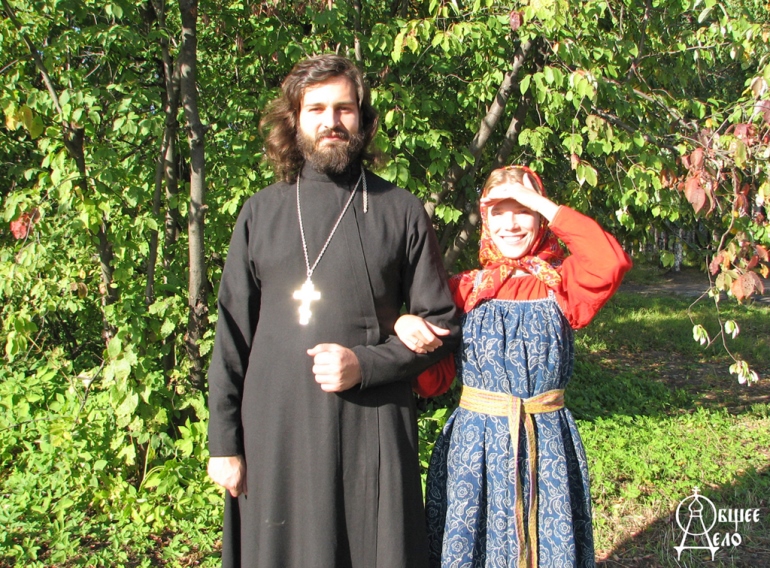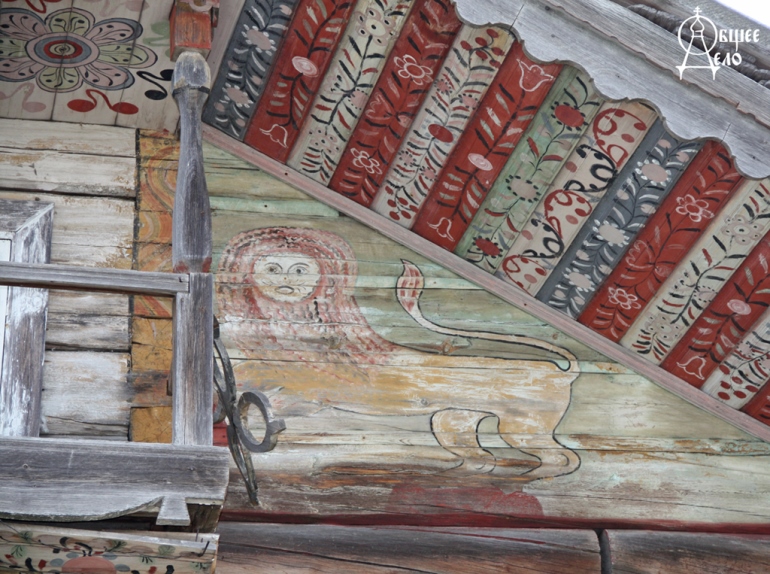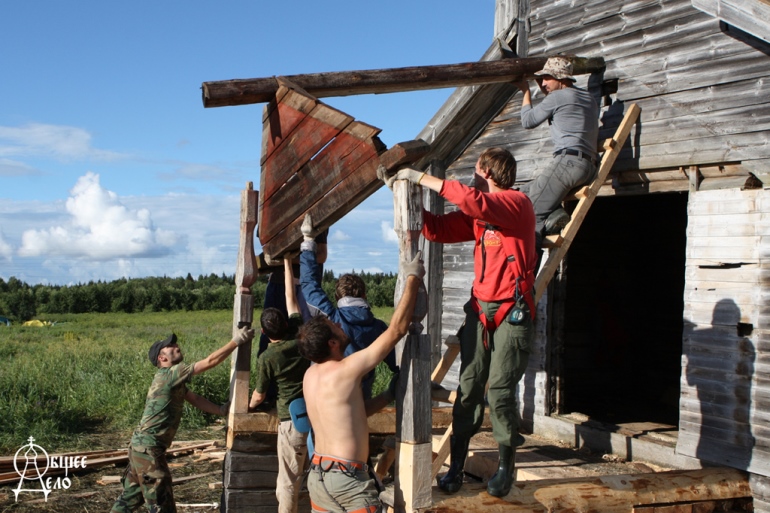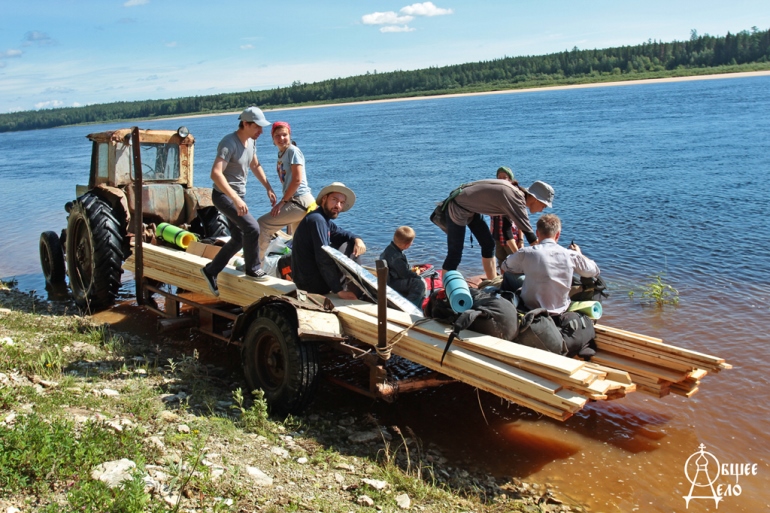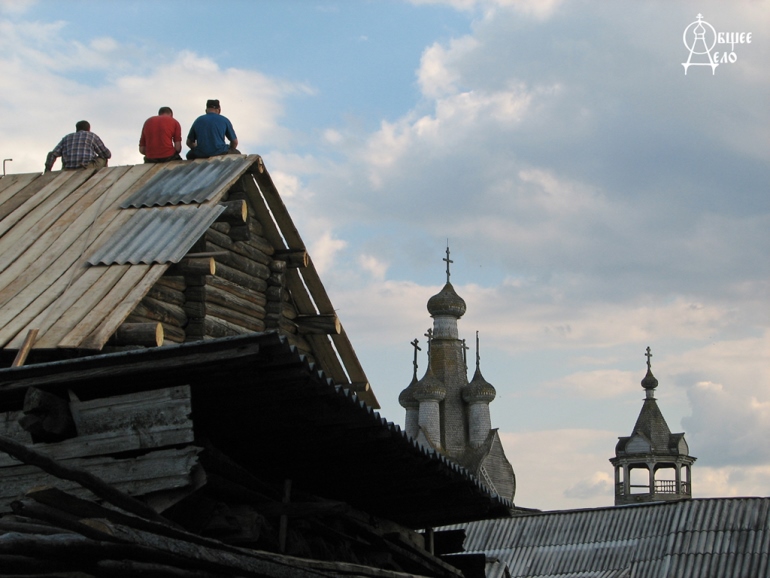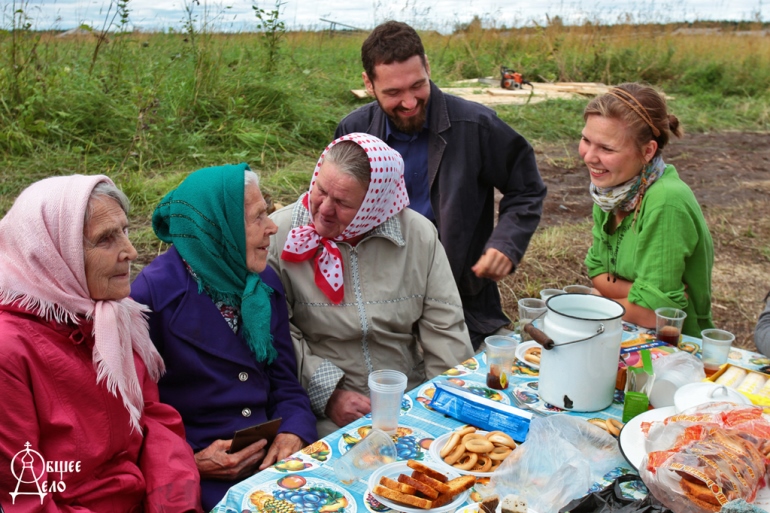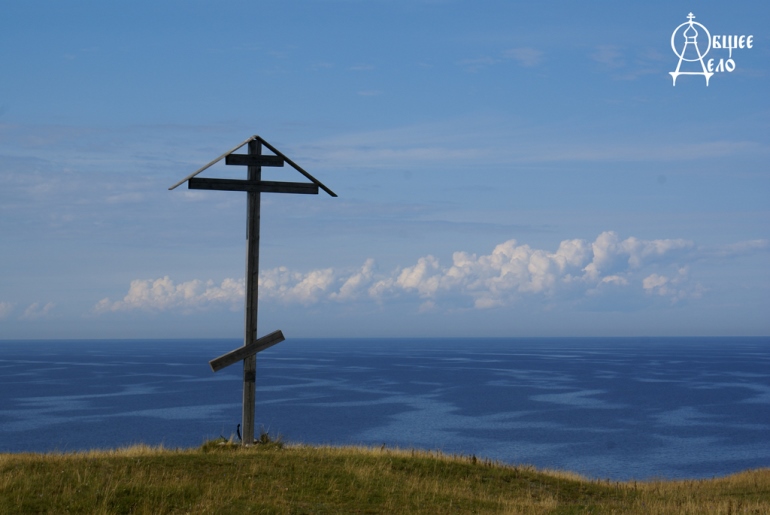Svetlana Smetanina
Photo credit: obsheedelo.ru
For more than ten years, hundreds of volunteers have travelled to the Arkhangelsk and Vologda Regions, as well as to Karelia and Komi to preserve ancient temples from destruction and extinction. Over the years, 320 expeditions have taken place, 360 churches and chapels have been explored, and accident prevention works have been conducted in many of them. Alexei Yakovlev, an archpriest and the supervisor of the Common Cause: Restoration of Wooden Temples of the North Project, shares how the project has been implemented and developed so far.
– Let me start with a recent event that caused a great resonance throughout the world - a fire in the Notre-Dame de Paris. Many people in our country wrote that it was necessary to help the French with the cathedral restoration. Others reminded that ancient temples had been destroyed at our homeland as well, which also required help. And thus, I would like to ask: how important is the project aimed to restore temples of the Russian North today? Why is it so important that many more people know about the project?
– Fire in the Notre-Dame de Paris is a really sad event. When the temple was still burning, I contacted Fabrice Duffaut, the head of the Rempart volunteer organization in France, and offered our help if it was required. They warmly welcomed our approach and were very grateful. We are friends with the French volunteers, and the Notre-Dame de Paris is the history of France and its ancient sacred place. Therefore, the need and desire to help in its restoration, when required, are absolutely natural.
Moreover, the French are very interested in our project; from time to time some of them take part in our expeditions to the Russian North. They work very conscientiously and sincerely. Recently, one French lady was taking part in the Project. She is an art expert, so this is her professional field. She worked very conscientiously, while being absolutely happy. I asked what attracted her to the Russian North the most. She replied that it was a unique mix of spiritual, cultural and practical aspects, and that you can do something useful with your own hands.
Photo credit: obsheedelo.ru
Therefore, what happened to Notre-Dame de Paris is grief for us as well, and if required, we will all come and help. Just as we helped, for instance, when the Kondopoga temple burned down. We have very good relations with the Inspectorate for the Preservation of Monuments of the Republic of Karelia. They were very grateful for the help.
Our volunteers came to sort out the fire effects and, according to employees of the Ministry of Culture of the Republic of Karelia, the volunteers participation changed the situation completely. Just imagine what the loss of temple means for those who love and cherish it. It is just the same as death of a close and dear person. But when volunteers from all over the country joined efforts to rescue the temple, there came the confidence that it would be restored. Because they work with love and passion. You can see eyes gleaming with zeal amidst despair and frustration, and then hope arises, the hope which even turns into faith.
In this sense, our project is extremely important - in terms of discovering our homeland for our compatriots. I believe that you can truly become a Russian person when you touch the cultural monuments left by your predecessors. And it is especially important to do something for them, not only touch.
Photo credit: obsheedelo.ru
We are talking about Notre-Dame de Paris. Of course, it is one of the greatest cultural heritage of mankind. But our wooden temples, which are 300 years old and which are higher than a five-story building, are just as amazing and absolutely unique phenomenon in history. There is no any such structure in any other country in the world. And at the same time there is no another example of such heritage to be abandoned and neglected in such a way.
Dozens of such temples remain unknown to all, but these are the temples that tell us, the Russians, who we are and who our predecessors were. Immense boldness and ardent love for God were required to build such a temple. It was necessary to be a hardworking person in an extraordinary way; just think of it: no one had ever built such temples of wood. And we are descendants of this amazing culture.
Photo credit: obsheedelo.ru
When we see these temples, we understand that our people are not what they were told to be during the Soviet years. They are hardworking, pious, strong people with a beautiful soul. After all, any temple is a reflection of its creators’ soul. And our wooden architecture is the very covenant that our predecessors left for us. This is the way we were. And what kind of people are you?
That is why, when we come to these temples and not just touch them, but do something, we become Russians. And we become one with the people who built them.
Father Alexei Yakovlev. Photo credit: obsheedelo.ru
Maybe we are unable to create such masterpieces even in our days. But at least we stand in line with those who built them, as well as with those who preserved these temples for us during the Soviet years, sometimes even by means of their martyr feat. In this regard, I believe our project is very important for modern society, taking into account the world’s self-determination when it is subject to globalization.
– How many temples in various states of preservation are there in the Russian North nowadays?
– We have collected detailed statistics based on our research. Almost half of the temples are in critical condition. Every year matters. After ten more years many of them will turn into ruins. This is due to global processes of conurbation and extinction of villages. At the same time, when temples are being restored, life is reviving there. Because for us, town-forming elements include sacred places as well, not just river crossings and large trading places. I can mention here Sergiev Posad and many other similar examples.
Today people do not abandon anymore areas where temples are being reconstructed; new houses are being built, families are formed. Preservation of sacred places is essential for preservation of the territory. They are the one that state: this land is Russian.
From time to time one of my friends, a priest, is invited to Norway - for performance of services and installation of crosses. And he says that the Norwegians do not believe that the Russian North belongs to Russia since the people do not care about preserving sacred places there. When we preserve and revive those temples, we say that we are the very Russians. This is our land, our history, our culture and our sacred places.
Photo credit: obsheedelo.ru
– What kind of people join the Common Cause Project?
– As a rule, they are very good, very strong people. Because aside of thinking of good, they are also willing to do good things. These are the people who are literally capable of the feat. They go to places where no one waits for them; they go to work, and they do it of their own free will. And it is really great that the project has gathered together such good, courageous, and creative people. This is a truly common cause. Something new comes to them and it subsequently empowers their lives.
Photo credit: obsheedelo.ru
They are the people of various ages and professions; but they all share a desire to do something good. They may be believers or atheists. Once I asked such an atheist, what makes him come to expeditions to the north. He replied that it was the desire to be together with good people who do it.
Photo credit: obsheedelo.ru
Our project is really open for all. But every person should understand that any expedition is a serious and responsible endeavor.
– Sometimes they have to overcome completely impassable areas, don’t they?
– It depends. Some temples are located just a few meters from a federal highway. And some of them are at eight hours drive by an off-road vehicle, for example, in the Urals. Or you need to walk ten kilometers with backpacks. The other day we made a presentation of the project in the Kaspersky Lab. One of their employees takes aerial photographs; it is his hobby. And so he told us: “I was there three years ago and thought that my photos of these temples were the last ones before their destruction, I was sure that no one would be able to get there.”
But we did it. Last year we conducted restoration works in 26 temples and chapels.
Photo credit: obsheedelo.ru
– An incredibly beautiful temple in Krasnaya Lyaga has become a symbol of the revival of temples in the Russian North. How was its restoration performed?
– Having arrived at this temple, we found out that we could get inside through rapture in the western gate. Everything inside was covered with bird droppings, because the temple was closed for decades. However, remarkably beautiful "heaven” were preserved there. ”Heaven” is a special kind of icons that adorn the ceiling. And in the altar area, the altar barrel gable (bochka) collapsed; and brown pieces of wood protruded through rotted beams.
The temple in Krasnaya Lyaga. Photo credit: azbyka.ru
First of all, we arranged a clean-up there and removed all the garbage. And then we re-covered the altar bochka. Its cost was 150 thousand rubles only. And remember that the temple was built in 1655! The next year we re-covered the politsi (lower flat parts of tent roof diverting rainwater from the walls). The temple is of tent shape, and when water runs down the tent, it first falls on the politsi. They are the first prone to damage.
When we did this, the locals began to come to the temple, although the nearest village is several kilometers away. We have decided that we do work only if there is no any chance for temple to survive. So we did what was essential, and then our good friends took it over since there was no more threat of destruction. They are restoring the ornamental part.
It would be great if some structures were established to somehow monitor security of temples.
– It appears that today such rescued temples begin to attract people again, for instance, tourists, is it so?
– Yes, it is. In the past it was hard if not impossible to come here. However, today the situation is quite different. In cooperation with the Heritage Institute (Russian Research Institute for Cultural and Natural Heritage named after D.S. Likhachov – ed.), we have written and published a guide book to wooden architecture of the Russian North. Now it is so easy to find out how to reach, where to stay and what to see.
Photo credit: obsheedelo.ru
We are doing our best to develop tourist spots where visitors could stay, relax, go fishing, and thus give local residents the opportunity to earn money.
Eight years ago, one idea leaped into my mind: what if summer travels for our schoolchildren were arranged with state support; children would be travelling the roads of the Russian North - along the Northern Dvina River and the Onega River, through the Kargopolsky District and by the White Sea. They would discover and perceive their homeland. It is extremely important so you know who you are.
Photo credit: obsheedelo.ru
Shortly before passing away, Dmitry Sergeyevich Likhachov, our renowned scientist and the foremost advocate of Russian culture, stated that the revival of Russia will begin in the Russian North. Probably the time has come.
Any person wishing to support the Common Cause: Restoration of Wooden Temples of the North Project can do it through the
following link

